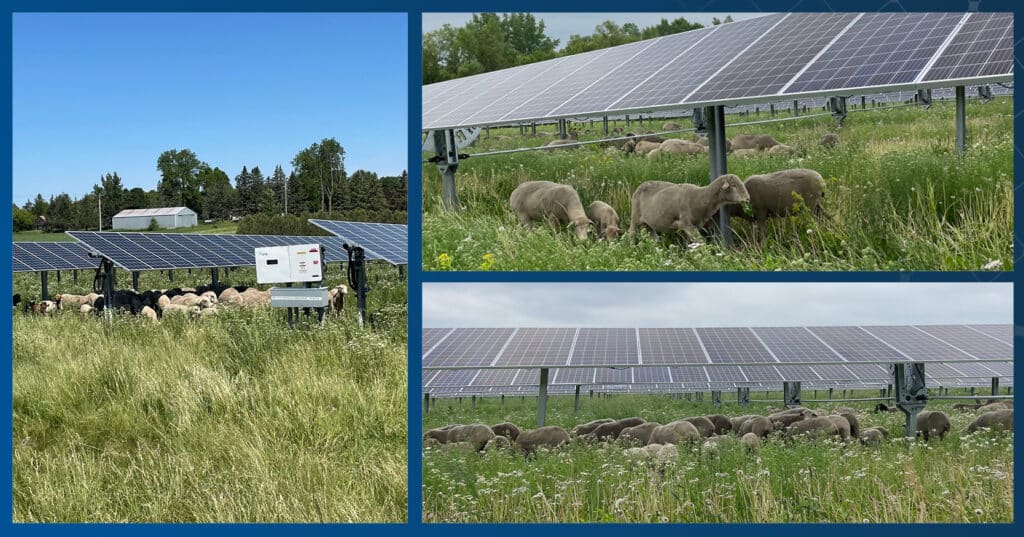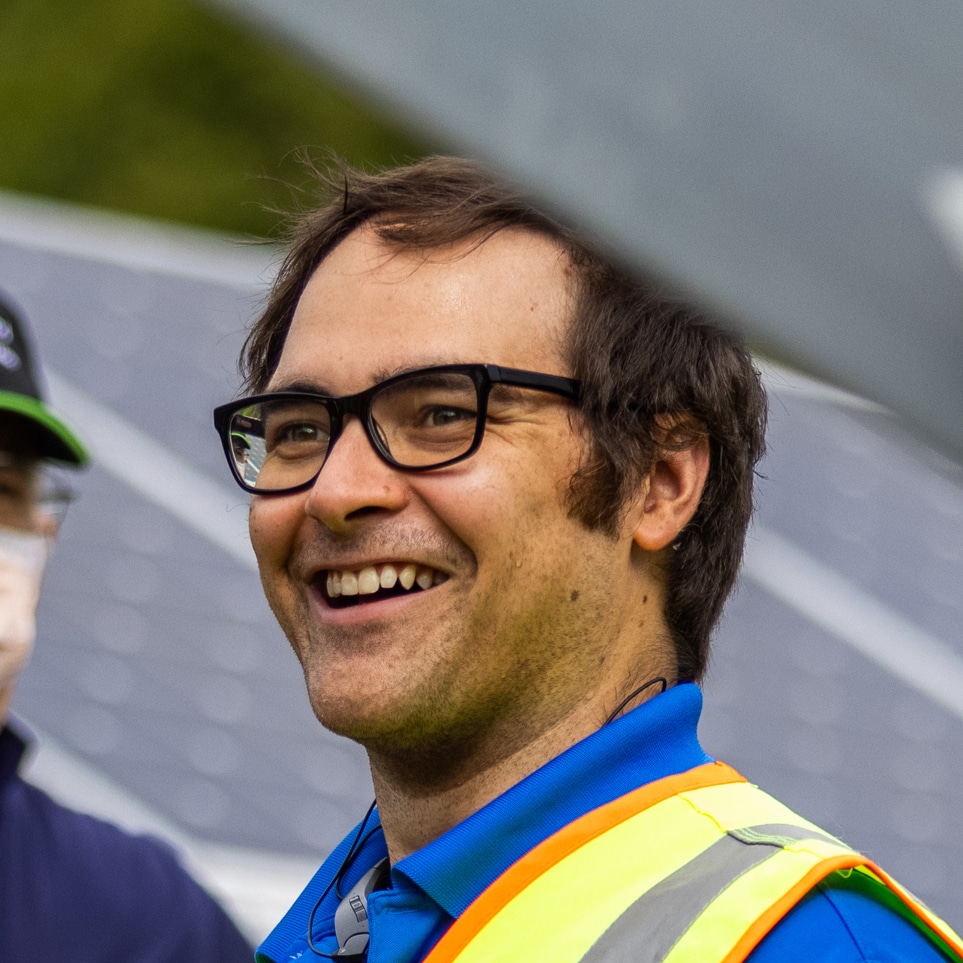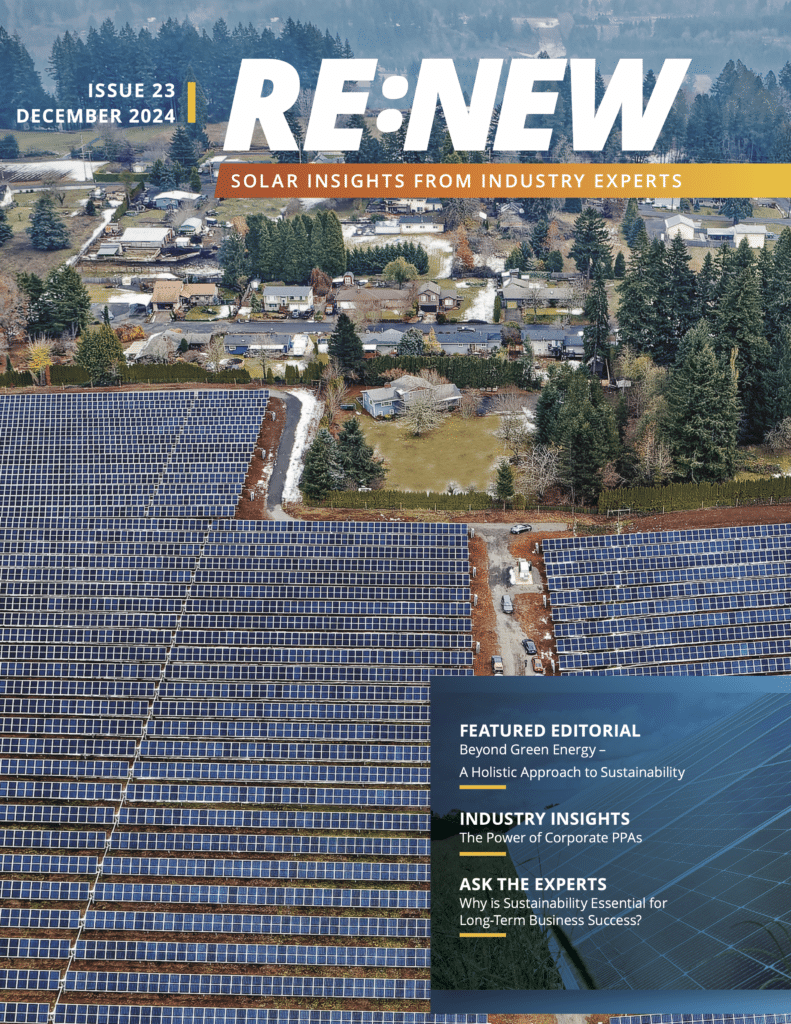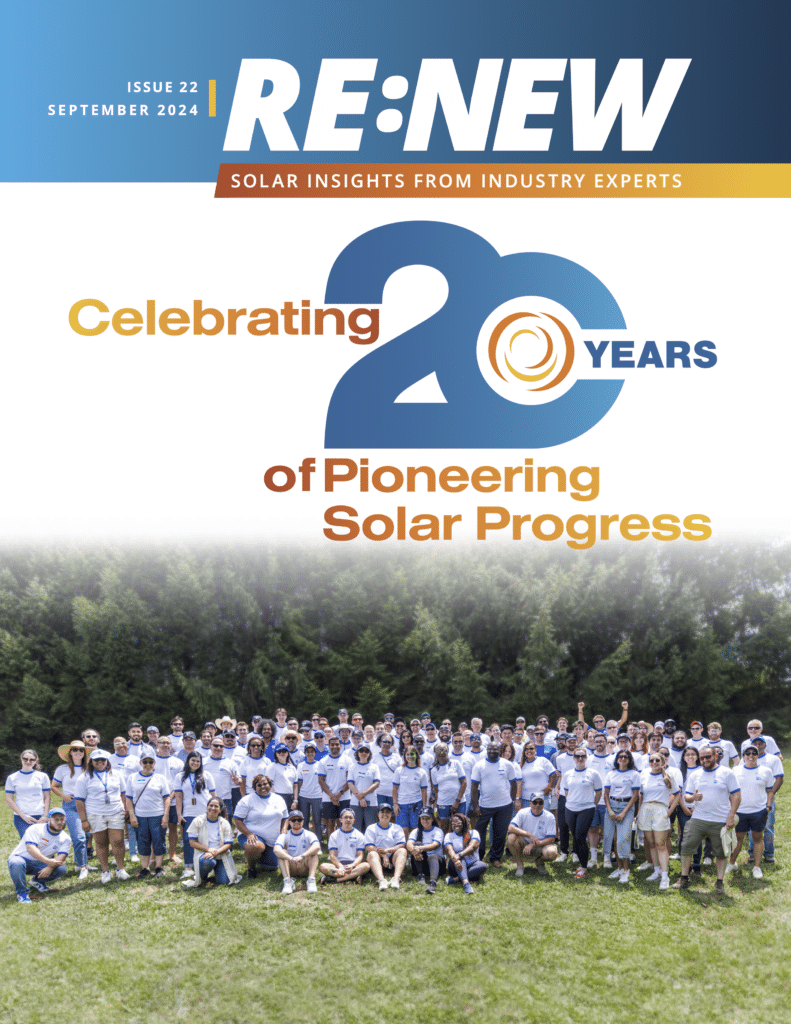In the upper Midwest, Cannon Valley Graziers is providing a model for this innovative practice
Agrivoltaics, the dual use of land for siting solar and farming, is gaining popularity for good reason. The practice can increase crop production, land productivity and solar panel efficiency. It can reverse habitat loss. And it provides significant economic benefits to both farmers and the surrounding communities.Incorporating pollinator-friendly plants in solar farms adds to the numerous benefits of agrivoltaics. To ensure that these ecosystems thrive, the right care and maintenance must be provided. The ideal solution is solar grazing, the practice of bringing sheep to a solar site to manage vegetation. Replacing mowers and herbicides with a flock of sheep maximizes habitat benefits without sacrificing aesthetics and function. Solar grazing provides a high-quality, cost-effective alternative to conventional operations and maintenance (O&M) strategies.
Maintaining solar farms in the Midwest
Standard Solar is working with local solar grazing company, Cannon Valley Graziers (CVG), on several of our arrays in Minnesota. Arlo Hark and Josephine Trople founded CVG in 2018, a livestock-powered vegetation management company in Northfield, Minnesota. Since then, they have extended their solar grazing projects throughout much of southeastern Minnesota and western Wisconsin.
As in other parts of the U.S., many solar sites in the upper Midwest have installed a pollinator-friendly seed mixture designed to provide top-notch habitat for bees, butterflies and other native pollinator insects. The seed mixtures also provide excellent habitat for rabbits, pheasants, songbirds and other small creatures. These habitat-rich, native ecosystems are key to the ecological diversity of the region, and CVG’s goal is to help them thrive.
CVG works with clients like Standard Solar to develop site-specific grazing plans that target the particular needs of each site. By using the tools of adaptive grazing and adjusting variables such as stocking density (the quantity of sheep per acre) and visit duration, they are able to provide a targeted service that meets each client’s goals. “Working with livestock is a highly adaptive process that requires constant evaluation to ensure that the animals are healthy and clients’ goals are being met,” says Hark. “If something isn’t working, or if environmental circumstances change, we adjust our approach to ensure positive outcomes.”
Why sheep are ideal solar grazers
Sheep are ideally suited to maintaining solar sites. Unlike goats, sheep do not climb, jump or chew on wires. Unlike cows, sheep can easily walk under the panels without damaging them, and they don’t rub or scratch themselves on posts.
Sheeps’ size gives them a significant advantage for vegetation management; they can access and control otherwise hard-to-reach spots. They eliminate the need for string trimmers and clean up areas around posts, inverters and other equipment. In addition, they eliminate the need for mowers and other heavy machinery on site, reducing the risk to panels and other infrastructure.
By incorporating solar grazing with sheep into their O&M strategy, asset owners are able to significantly cut annual costs. “Because the practice effectively keeps land in agricultural production,” says Hark, “it provides a tangible way for developers and asset owners to demonstrate that they are committed to preserving the agricultural heritage of the upper Midwest.”
CVG also discovered an unexpected benefit of solar grazing while observing sheep at the Greenhouse Solar project in Pine Island, Minnesota. The sheep immediately went for the undesirable vegetation — the dandelions and small woody species that were beginning to grow near the posts. But they barely touched the many pollinator-friendly species at the site, including yarrow and golden Alexanders. With this targeted maintenance, the sheep showed they really are ideal for agrivoltaics.

Studying the impact of solar grazing
Because solar grazing is in its infancy, it is being studied further to refine the practice. CVG is partnering with Natural Resource Services (NRS) on a Sustainable Agriculture Demonstration Grant, issued by the Minnesota Department of Agriculture (MDA), to advance the widespread adoption of solar grazing in Minnesota by developing and testing a ground-cover seed mix for use in solar grazing systems. The project is titled “Developing The Right Seed Mix for Solar Grazing in Minnesota.”
Over a three-year period, the study will compare four distinct seed mixes on four separate test sites and measure their effectiveness in four categories: ease of establishment, cost-effectiveness, climate resilience and benefits to pollinators and sheep. The team hopes to provide the public with an effective, Minnesota-specific solar grazing seed mix that can be used across the state in a variety of applications. Because the Greenhouse Solar array is a previously established pollinator project, it is being used as a control site that also allows the team to study the benefits of introducing sheep to sites with established vegetation.
To date, the study has found that solar grazing is a highly effective O&M strategy when done right. That means using the appropriate stocking density and duration — generally a large number of sheep in a small area for a short time. The study has implications far beyond Minnesota. At scale, solar grazing has the potential to save developers and asset owners thousands of dollars in annual maintenance costs, while also providing an excellent avenue for solar asset owners to build relationships with the agricultural communities in which their sites are located.
Standard Solar is proud to be part of this pioneering work in a rapidly growing sector of the solar market. Our agrivoltaics sites across the U.S. will benefit from what we’re learning in our partnership with CVG, which will serve as a model that all solar asset owners can follow.
More Recent Blog Posts
Building an Enduring Solar Legacy in America’s Next Energy Era
June 9, 2025
Rick Berube · 2 min read
Beyond Panels: How The Catholic University of America Cultivates Holistic Sustainability Through Solar
May 13, 2025
John Finnerty · 4 min read
Celebrating 20 Years of Transforming the Energy Landscape
December 12, 2024
Scott Wiater · 5 min read
Honoring Our Past To Build Our Future
November 18, 2024
Scott Wiater · < 1 min read
Most Popular Blog Posts
How To Create A Complete Commercial PV Design Package
CJ Colavito · 4 min read
Navigating Solar Policy in Uncertain Times: Standard Solar’s October Policy Brief
Trevor Laughlin · 4 min read
Neville Williams: Standard Solar’s Standard Bearer
Tony Clifford · 4 min read
Building an Enduring Solar Legacy in America’s Next Energy Era
Rick Berube · 4 min read





Share